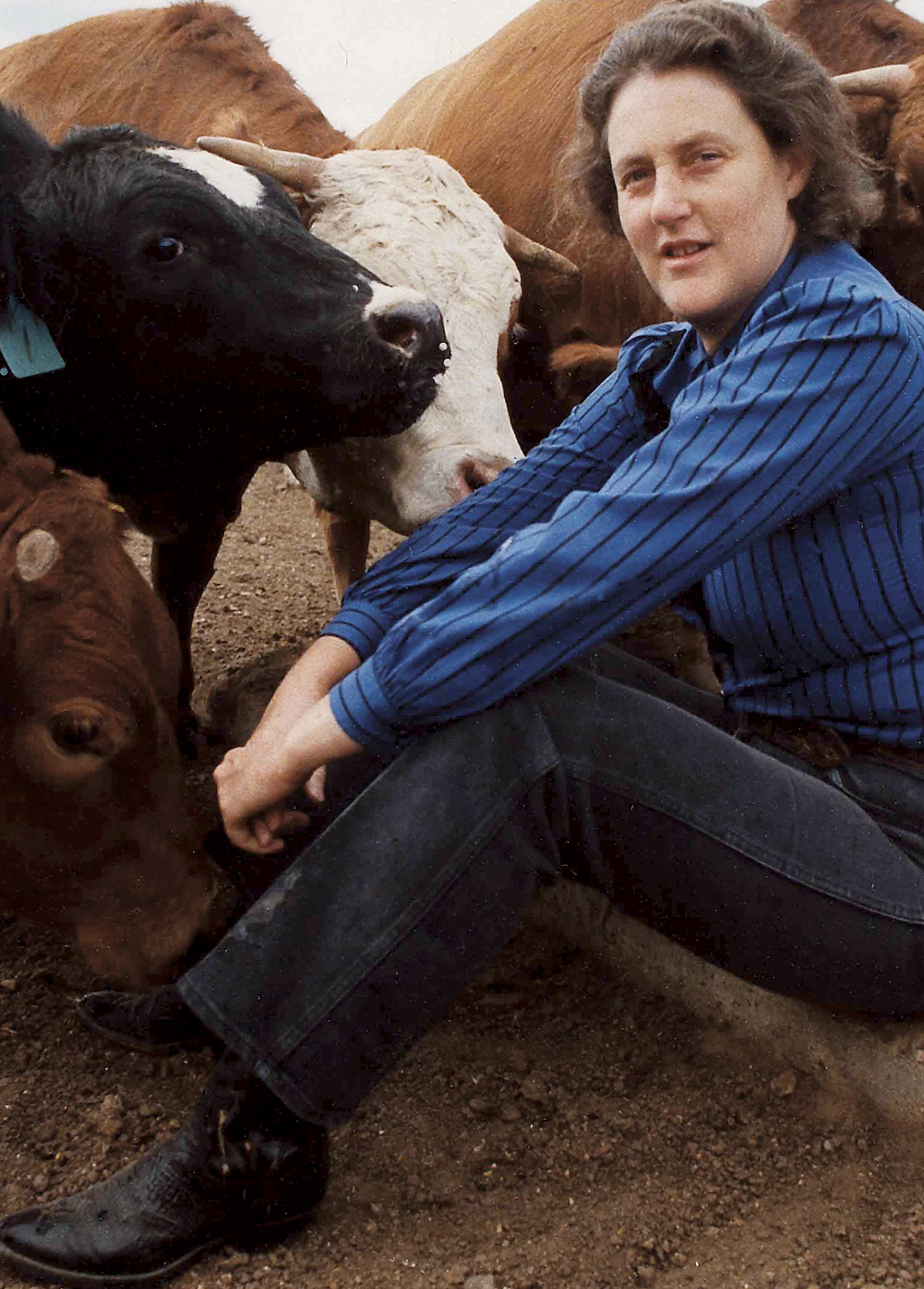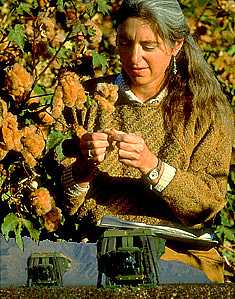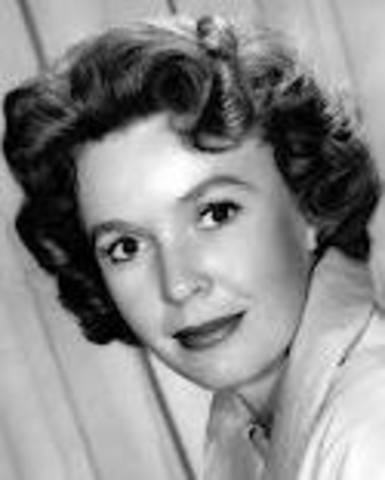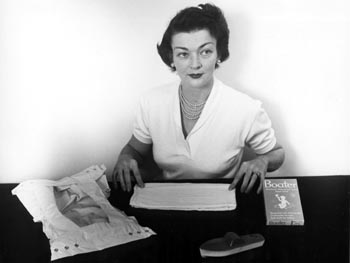Gabrielle Émilie Le Tonnelier de Breteuil, marquise du Châtelet was a French mathematician, physicist, and author during the Age of Enlightenment. Her crowning achievement is considered to be her translation and commentary on Isaac Newton's work Principia Mathematica. The translation, published posthumously in 1759, is still considered the standard French translation.
Voltaire, one of her lovers, declared in a letter to his friend King Frederick II of Prussia that du Châtelet was "a great man whose only fault was being a woman". She was also romantically linked with two other influential philosophers of the period, Pierre-Louis Moreau de Maupertius (1698-1759) and Julien Offray de La Mettrie (1709-51).
Du Châtelet's education has been the subject of much speculation, but nothing is known with certainty.
Among their acquaintances was Fontenelle, the perpetual secretary of the French Académie des Sciences. Émilie's father Louis-Nicolas, recognizing her early brilliance, arranged for Fontenelle to visit and talk about astronomy with her when she was 10 years old. Émilie's mother, Gabrielle-Anne de Froulay, was brought up in a convent, at the time the predominant educational institution available to French girls and women. While some sources believe her mother did not approve of her intelligent daughter, or of her husband's encouragement of Émilie's intellectual curiosity, there are also other indications that her mother not only approved of du Châtelet's early education, but actually encouraged her to vigorously question stated fact.
In either case, such encouragement would have been seen as unusual for parents of their time and status. When she was small, her father arranged training for her in physical activities such as fencing and riding, and as she grew older, he brought tutors to the house for her. As a result, by the age of twelve she was fluent in Latin, Italian, Greek and German; she was later to publish translations into French of Greek and Latin plays and philosophy. She received education in mathematics, literature, and science. Her mother Gabrielle-Anne was horrified at her progress and fought Louis-Nicolas at every step, once attempting to have Émilie sent to a convent.
In 1733, at the age of 26, du Châtelet resumed her mathematical studies. Initially, she was tutored in algebra and calculus by Moreau de Maupertuis, a member of the Academy of Sciences. Although mathematics was not his forte, Maupertuis had received a solid education from Johann Bernoulli, who also taught Leonhard Euler. By 1735, however, du Châtelet had turned for her mathematical training to Alexis Clairaut, a mathematical prodigy known best for Clairaut's equation and Clairaut's theorem.
Scientific Research and Publications
Criticizing Locke and the debate on thinking matter
In her writings, Emilie du Châtelet criticizes John Locke’s philosophy in an elementary respect. She emphasizes the necessity of the verification of knowledge through experience: Locke’s idea of the possibility of thinking matter is […] abstruse. Her critique on Locke originates in her Bernard de Mandeville commentary [on the Fable of the Bees]. She confronts us with her resolute statement in favor of universal principles which precondition human knowledge and action, and maintains that this kind of law is innate. […] Du Châtelet claims the necessity of a universal presupposition, because if there is no such beginning, all our knowledge is relative. In that way, Du Châtelet rejects John Locke’s aversion of innate ideas and a priori principles. She also reverses Locke’s negation of the principle of contradiction, which would constitute the basis of her methodic reflections in the Institutions. On the contrary, she affirms her arguments in favor of the necessity of a priori and universal principles. “two and two could then make as well 4 as 6” if a priori principles did not exist.
Pierre Louis Moreau de Maupertuis’ and Julien Offray de La Mettrie’s reference to Du Châtelet's deliberations on motion and free will, on thinking matter and numbers and on the way to do metaphysics indicate the importance of her reflections. She rebuts the claim to finding truth by using mathematical laws, […] and argues against Maupertuis.
Heat and light
Dissertation Sur La Nature et La Propagation du feu, 1744
In 1737, Châtelet published a paper entitled Dissertation sur la nature et la propagation du feu, based upon her research into the science of fire, that predicted what is today known as infrared radiation and the nature of light.
Institutions de Physique
Her book Institutions de Physique (“Lessons in Physics”) appeared in 1740; it was presented as a review of new ideas in science and philosophy to be studied by her thirteen-year-old son, but it incorporated and sought to reconcile complex ideas from the leading thinkers of the time.
Forces Vives
Réponse de Madame la Marquise du Chastelet, 1741
In 1741, du Châtelet published a small book entitled Réponse de Madame la Marquise du Chastelet, a la lettre que M. de Mairan. Dortous de Mairan, secretary of the Academy of Sciences, had published a set of arguments addressed to her regarding the appropriate mathematical expression for forces vives. Du Châtelet presented a spirited point by point rebuttal of de Mairan's arguments, which caused him to withdraw from the controversy.
Advocacy of kinetic energy
Although in the early 18th century the concepts of force and momentum had been long understood, the idea of energy as a transferrable currency between different systems, was still in its infancy and would not be fully resolved until well into the 19th Century. Émilie du Châtelet contributed towards this resolution when, inspired by the theories of Gottfried Leibniz, she repeated and publicized an experiment originally devised by Willem 's Gravesande in which balls were dropped from different heights into a sheet of soft clay. Each ball's kinetic energy - as indicated by the quantity of material displaced - was shown conclusively to be proportional to the square of the velocity. Earlier workers like Newton and Voltaire had all believed that "energy" (so far as they understood the concept at all) was indistinct from momentum and therefore proportional to velocity. In classical physics the correct formula is E_k = \frac12 mv^2, where E_k is the kinetic energy of an object, m its mass and v its velocity.) Some commentators have perceived this as a precursor to the c^2 multiplier in Albert Einstein's mass-energy formula, and indeed \frac12 mv^2 is the first term in the binomial expansion of the relativistic kinetic energy expression.
Translation and commentary on Newton's Principia
In 1749, the year of her death, she completed the work regarded as her outstanding achievement: her translation into French, with her commentary, of Newton’s Principia Mathematica, including her derivation of the notion of conservation of energy from its principles of mechanics. Published ten years after her death, today du Châtelet's translation of Principia Mathematica is still the standard translation of the work into French.
Other contributions
Development of financial derivatives
Much later in life, she once lost the huge sum of 84,000 francs—some of it borrowed—in one evening at the table at the court of Fontainebleau, to card cheats. To quickly raise the money to pay back her debts, she devised an ingenious financing arrangement similar to modern derivatives, whereby she paid tax collectors a fairly low sum for the right to their future earnings (they were allowed to keep a portion of the taxes they collected for the King), and promised to pay the court gamblers part of these future earnings.
Biblical scholarship
Du Châtelet wrote a critical analysis of the Bible, specifically the book of Genesis and those of the New Testament.
Discourse on happiness
Du Châtelet also wrote a monograph, Discours sur le bonheur, on the nature of happiness, both in general and specialized to women.
Translation of the Fable of the Bees, and other works
Du Châtelet translated The Fable of the Bees in a free adaptation. She also wrote works on optics, rational linguistics, and the nature of free will.
Support of women's education
In her first independent work, the preface to her translation of the Fable of the Bees, du Châtelet argues strongly for women's education, particularly a strong secondary education as was available for young men in the French collèges. By denying women a good education, she argues, society prevents women from becoming eminent in the arts and sciences.
Legacy
Although the classical mechanics of du Châtelet are not approached with the same accuracy as Einstein's concept of mass and velocity,[20] in his famous equation for the energy equivalent of matter E = mc² (where c represents the velocity of light), modern biographers and historians continue to see a neat accord with the principle E ∝ mv² first recognised by du Châtelet from over 150 years before. It should be emphasized, however, that from a physical point of view, du Châtelet's principle is a correct assessment of the kinetic energy in classical mechanics, and is the first term in an expansion of Einstein's mass–energy equivalence.
A main-belt minor planet and a crater on Venus have been named in her honor, and she is the subject of three plays: Legacy of Light by Karen Zacarías; Emilie: La Marquise Du Châtelet Defends Her Life Tonight by Lauren Gunderson and Urania: the Life of Emilie du Châtelet by Jyl Bonaguro. The opera Émilie of Kaija Saariaho is about the last moments of her life.
Du Châtelet is often represented in portraits with mathematical iconography, such as holding a pair of dividers or a page of geometrical calculations. In the early nineteenth century, a French pamphlet of celebrated women (Femmes célèbres) introduced a possibly apocryphal story of du Châtelet's childhood. According to this story, a servant fashioned a doll for her by dressing up wooden dividers as a doll; however, du Châtelet undressed the dividers and intuiting their purpose, made a circle with them.

















